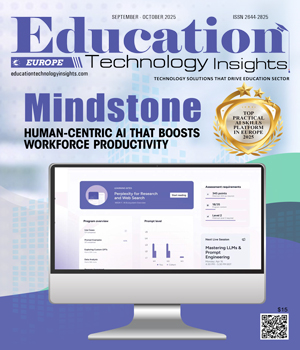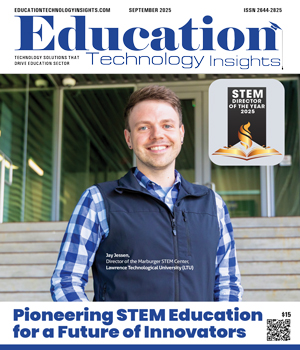THANK YOU FOR SUBSCRIBING
Be first to read the latest tech news, Industry Leader's Insights, and CIO interviews of medium and large enterprises exclusively from Education Technology Insights
Engaging Students in a Virtual Landscape
Matthew Woods, Director of Student Support Services, Henry County Public Schools
 Matthew Woods, Director of Student Support Services, Henry County Public Schools
Matthew Woods, Director of Student Support Services, Henry County Public SchoolsAll educators witnessed a paradigm shift in instruction due to COVID-19. Everything we took for ‘normal’ became flipped upside down. One of the biggest changes during the onset of schools shifting to virtual learning was the lack of student engagement. Many took for granted the luxury of seeing our students physically on a consistent basis. We have all had to recalibrate what our traditional notion of student engagement looks like, and devote more concentration on understanding the virtual landscape to engage with our students. Based on what I have seen, I offer three tips to other educators that can help them engage their students, and be successful in this virtual environment:
Tip #1: Instantaneous Feedback
No matter if you are using a learning management system (such as: Canvas, Edmodo, Blackboard, etc.), take advantage of the live feedback that you and your students get from these interactions. For example, in a traditional format, students who complete an activity utilizing traditional paper and pencil would have to submit the work, wait for the teacher to review and mark corrections, then return it to the students. This could result in potential time lapse where the student could be assuming what they answered is correct. As many educators well know, it is harder to unteach something than it is to start fresh. However, when using platforms that have instantaneous feedback, your students can get their revisions and next steps in a timely manner.
“No matter if you are using a learning management system (such as: Canvas, Edmodo, Blackboard, etc.), take advantage of the live feedback that you and your students get from these interactions.”
Tip #2: Reassess your Students
Just like many educators are experiencing, there are countless students that are struggling with navigating this new structure of learning that is more dependent on technology. Excluding the students who do not have reliable broadband capability, I am referring to the students who were considered ‘stellar’ students in the traditional format and now are having difficulties. These issues could range from the lack of personal engagement they are experiencing since they are not in-person with their teachers to having to focus on their academic learning in an unstructured environment at home. In a similar vein, we are also seeing students that are thriving and are showing they are capable of being independent learners without much direct instruction from the teacher. As educators are identifying where students fall in either category, it is wise for us to reassess and note their preferred learning style.
Tip #3: The 5 Second Rule
No matter what you are about to send out to parents or students, it needs to follow the five second rule. For example, if you read your directions for an assignment to someone, and they can not engage with it in under five seconds, you need to revise it. While some of our students are having their parents and other guardians assist them reviewing assignments, many do not have that luxury, so it is even more important than ever that we provide clear, explicit, kid-friendly language that is simple and to the point. Additionally, just because a parent has the time to assist their child with an assignment does not mean they will understand education jargon that might seem foreign to them. So the next assignment you get ready to present, read the directions to someone and time how long it takes for them to start responding.
Read Also
Designing Learning that Transforms and Fosters Change
Stop Chasing Interesting. Start Choosing Impact.
Leading with Purpose to Strengthen Campus Belonging
Achieving Educational Excellence through Meaningful Engagements
Beyond Administration: How a School Management System Transforms Learning Communities
Empowering Educators through Purposeful, Connected and Transformative Learning

I agree We use cookies on this website to enhance your user experience. By clicking any link on this page you are giving your consent for us to set cookies. More info






















